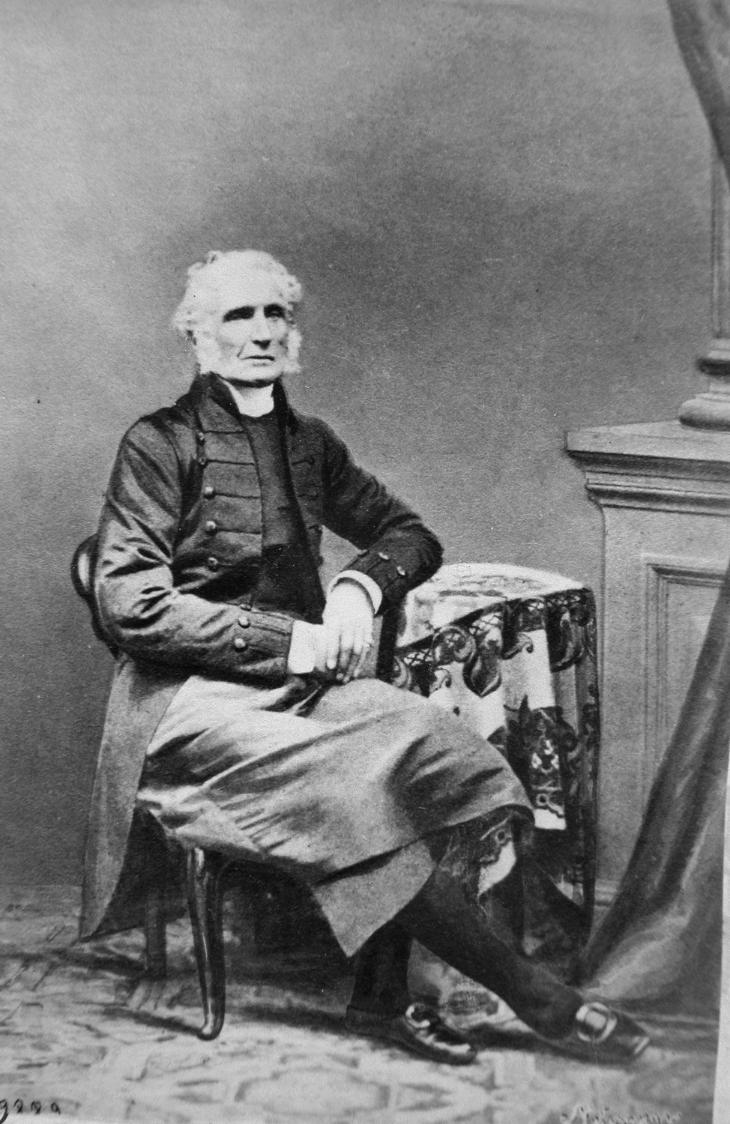Divine Walk – Archdeacon Mountain’s Trek to Metis in 1822

Photograph
Bishop Mountain, 1863
William Notman
McCord Stewart Museum
When George Jehoshaphat Mountain arrived in Metis in 1822, he was barely presentable. The son of the Anglican Bishop of Quebec, Mountain embarked on a parish tour as a young Archdeacon. He ventured to Gaspe on board ship and then visited the handful of parishioners by horse and buggy, canoe and finally on foot.
Two Indigenous guides accompanied him for most of the trip. For the final leg down the Tartigou River to the St. Lawrence, he was on his own, walking only with the aid of “a long staff made out of an old canoe paddle”. The road was too uneven for horses, so walking was the most efficient form of travel. In his diary of the journey, Mountain described his appearance on his arrival.
Lame and tattered…the scratches of my skin seen through the holes in my trowsers and stockings, without a neckcloth, my clothes soiled by the march, my shoes tied with twine, and my trowsers confined at the ancle to prevent their catching in the branches, with pins and strips of cedar bark…a colored handkerchief round the knee, to prevent the enlargement of a very serious solution of continuity to which pins had been repeatedly applied with little effect.
This is period language for “my pants are falling down”!
Mountain may not have had the appearance of a visiting clergyman – but he quickly got to work. He baptized several children and performed the first Sunday service for the settlers since their arrival in 1818. He continued his journey before he could perform the wedding of several couples anxious to make their unions legal. Mountain returned to Metis just once, in 1850, when the memories of his earlier expedition came flooding back.

